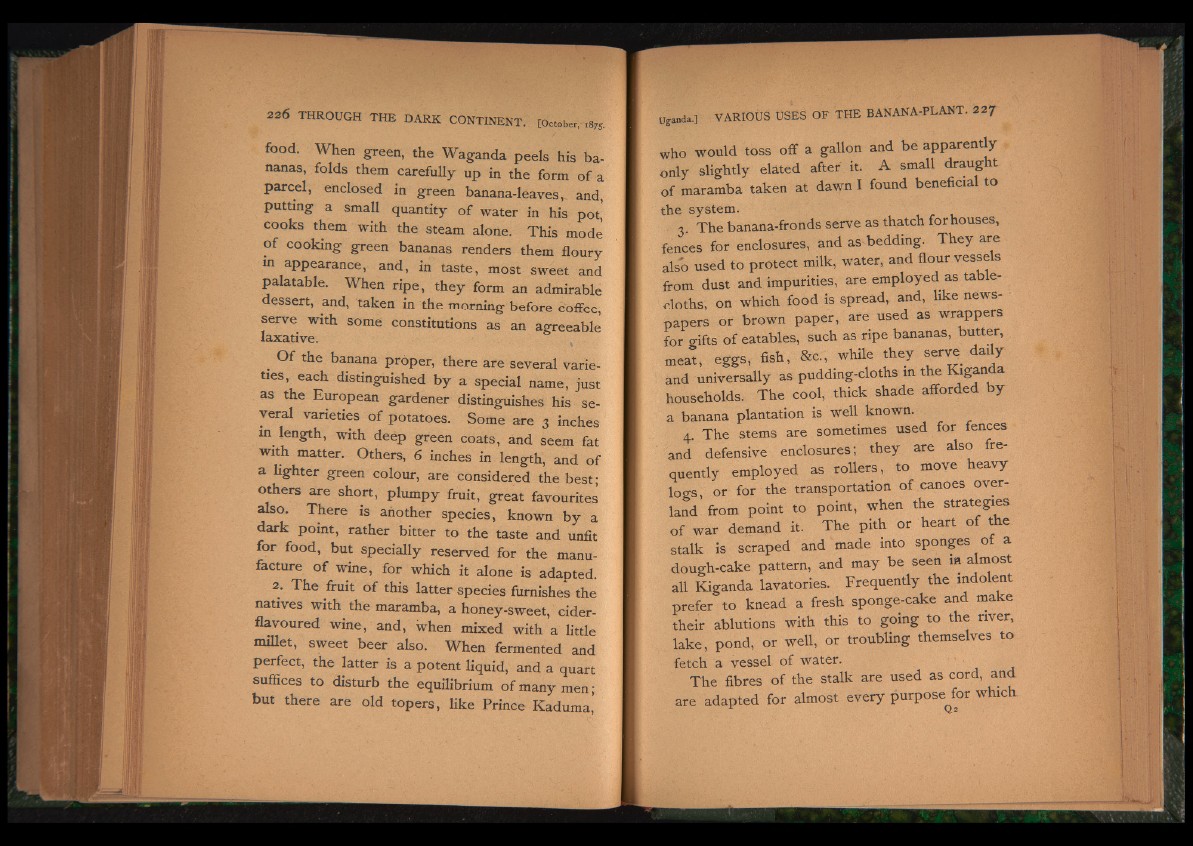
food. When green, the Waganda peels his bananas,
folds them carefully up in the form o f a
parcel, enclosed in green banana-leaves,. and,
putting a small quantity o f water in his pot,'
cooks them with the steam alone. This mode
o f cooking green bananas renders them floury
m appearance, and, in taste, most sweet and
palatable. When ripe, they form an admirable
dessert, and, taken in the morning before coffee,
serve with some constitutions as an agreeable
laxative.
O f the banana proper, there are several varieties,
each distinguished b y a special name, just
as the European gardener distinguishes his several
varieties o f potatoes. Some are 3 inches
in length, with deep green coats, and seem fat
with matter. Others, 6 inches in length, and o f
a lighter green colour, are considered the best;
others are short, plumpy fruit, great favourites
also. There is another species, known b y a
dark point, rather bitter to the taste and unfit
for food, but specially reserved for the manufacture
o f wine, for which it alone is adapted.
2. T h e fruit o f this latter species furnishes the
natives with the maramba, a honey-sweet, cider-
flavoured wine, and, when mixed with a little
millet, sweet beer also. When fermented and
perfect, the latter is a potent liquid, and a quart
suffices to disturb the equilibrium o f many men;
but there are old topers, like Prince Kaduma,'
who would toss off a gallon and be apparently
only slightly elated after it. A small draught
o f maramba taken at dawn I found beneficial to
the system.
3. The banana-fronds serve as thatch for houses,
fences for enclosures, and as bedding. T h e y are
also used to protect milk, water, and flour vessels
from dust and impurities, are employed as tablecloths,
on which food is spread, and, like newspapers
or brown paper, are used as wrappers
for gifts o f eatables, such as ripe bananas, butter,
meat, egg s , fish, & c „ while th e y serve datly
and universally as pudding-cloths m the Kiganda
households. T he cool, thick shade afforded b y
a banana plantation is well known.
4. T h e stems are sometimes used for fences
and defensive enclosures; they are also frequently
employed as rollers, to move heavy
lo g s , or for the transportation o f canoes overland
from point to point, when the strategies
o f war dejnand it. T h e pith or heart o f the
stalk is scraped and made into sponges of a
dough-cake pattern, and may be seen ia almost
all Kiganda lavatories. Frequently the indolent
prefer to knead a fresh sponge-cake and make
their ablutions with this to going to the river,
lake , pond, or well, or troubling themselves to
fetch a vessel o f water.
T h e fibres o f the stalk are used as cord, and
are adapted for almost every pu rp o se fo r which